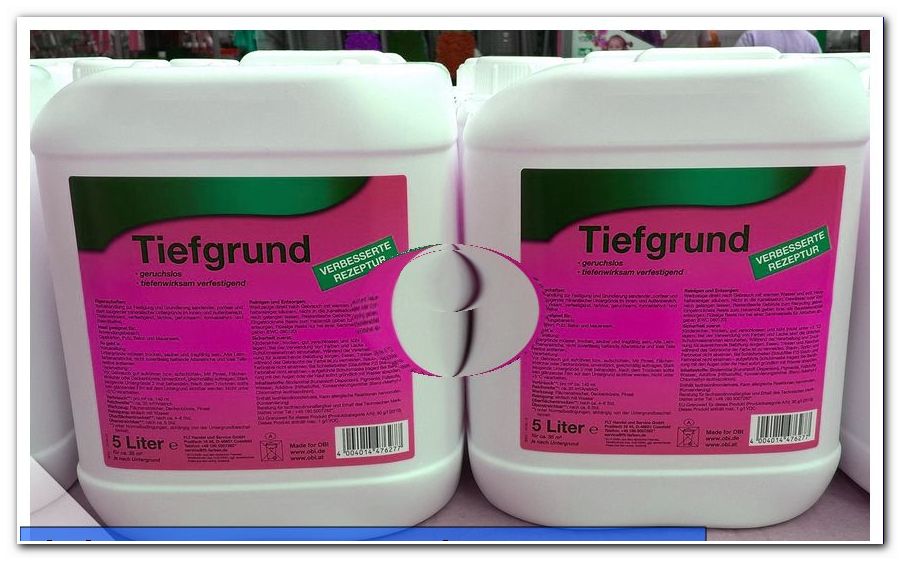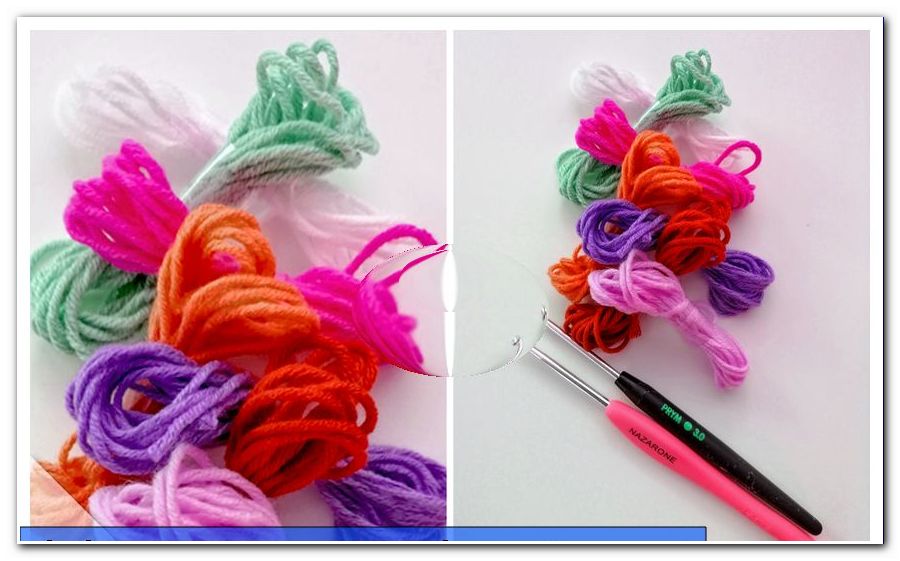Handlebar bag sewing - DIY guide for chic bicycle bags

- Material and preparation
- Sew with oilcloth
- cut
- Sew bicycle bag
Just in time for the beginning of spring I show you today how you can sew a great handlebar bag for yourself or your loved one. Both on children's bikes and on e-bikes or city bikes, the pannier can be seen and offers additional storage space on the go.
Difficulty level 1/5
Suitable for beginners
Cost of materials 2/5
about 12 - 15 euros for oilcloth and Velcro
Time expenditure 1/5
Around 1 hour
Material and preparation
You need this:
- Oilcloth (or an oilcloth tablecloth)
- Cotton fabric for the inside of the bag
- velcro fastener
- scissors
- ruler
- about 1 h time

Sew with oilcloth
Most of us do not have oil cloth at home because it is rarely used for sewing projects. The easiest way to buy a tablecloth made of oilcloth in the hardware store or supermarket and cut it. Such a tablecloth you usually get for less than 10 euros.
For sewing the handlebar bag with the sewing machine, it is advisable to use a leather or denim needle, as the oilcloth is usually coated with linseed oil and thus has a relatively firm surface. In any case, you should first try out the straight stitch on an oilcloth fabric remover to see if the needle can withstand the pressure and the seam pattern looks good. If a seam is to be split again, the fabric at this point is usually no longer easy to work with, since the holes are no longer closing.
cut
Step 1: First we cut the oilcloth and our cotton fabric. We determine the size of the bike bag as follows: The width should be about 5: 4 to the length, that is, for a width of 20 cm, we need a height of 16 cm.
For a handlebar bag suitable for a children's bike I would recommend this size. To a larger wheel pocket can be correspondingly larger, z. B. 30 cm in length to 24 cm in width.
My handlebar bag will have a size of 20 cm to 16 cm. For this I need both the oilcloth for the outside and the cotton fabric for the inside two times.

Step 2: To give the bag a proper depth, add 4 cm on both sides and at the bottom:

If you want, you can record the side parts of the bag on a sheet of paper or cardboard as in the drawing beforehand, cut it out and use it as a template. I draw the parts directly on the fabric or oilcloth.
Tip: Be sure to draw the right angles as accurately as possible with the ruler so that the pocket does not warp slightly at the end.

3rd step: Now we should have a total of 4x pieces of fabric:
- 2x cotton fabric for the inside pocket
- 2x oilcloth for the outside pocket
For the carrier we need 2x pieces of cloth in the size 6 cm x 16 cm made of oilcloth.
4th step: To attach the two straps of the bike bag later, we need another 2 x Velcro fasteners in a length of 3 cm.

Sew bicycle bag
Step 1: We start with the straps of the bag. Along the longitudinal axis, fold the two long sides of the oilcloth left to left and quilt all 4 sides with the straight stitch of your sewing machine.
Step 2: Next, put the Velcro on one side, about 1 cm from the edge. Both sides of the Velcro are now sewn from above with the straight stitch.

Tip: So that the Velcro does not slip, it can be pinned with a safety pin through the middle. It is important to ensure that the oilcloth is not treated too coarse because it is easy to crack in this material.
Step 3: After we have prepared the straps, we put the front of the bag together right to right. The oilcloth should now be on the cotton fabric.
The longest side (upper edge) is now quilted again.
Step 4: We'll do the same for the back of the bag, but the straps will need to be sewn in here. For this we place it between the two sides of the fabric (long side).
ATTENTION: Make sure that the supports point straight down and the interfaces are exactly on top of each other. If the straps are skewed between the two sides of the fabric, it can happen that parts of the carrier get caught between the side seams of the bag and thus become unusable.

Step 5: Now it's time to attach the Velcro straps to the back of the bike bag. The 3 cm long counterparts to the already attached to the carrier closures put on the outer fabric of the handlebar bag, so there is still enough space for the handlebar.
Tip: So that the Velcro does not slip, it can also be pinned here again with a safety pin through the middle. However, it should be ensured that the presser foot of the sewing machine still passes by the needle during stitching.
Step 6: If the front and back are sewn, we can join these parts. To do this, place the outer and inner pockets one on top of the other and secure everything.
Tip: Who has Wonderclips at home, should use these, because pins often leave unsightly holes in the oilcloth!
Then the bag is stitched with the straight stitch. There are two things to keep in mind:
- The corners of the bag remain free.
- We leave an approx. 10 cm turning opening on the side, so that we can then turn the handlebar bag to the right.

Step 7: Now we open the two things of the bike bag a little and push the four corners down. Now quilt these open positions again with the straight stitch.

8th step: Now that you have turned the bike bag through the turning opening to the right, close the hole by hand with a mattress stitch, with the needle from top to the opposite fabric and on the same side from bottom to top. If you pull on the thread slightly, there should be no visible seam.

Step 9: The last step of our guide is optional: Along the opening of our handlebar bag can now be quilted edged again, so that the fabrics lie nicely together and do not overlap.

That's it! Our bike bag is ready and ready for use!

If you want, you can also attach a push button in the middle of the open sides, so that the front fits nicely on the back.
Have fun sewing!




